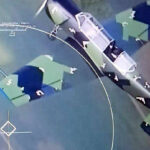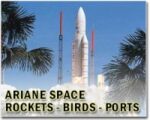Recent theoretical work on nuclear clocks offers a glimpse into a future where ultra-precise timekeeping becomes a tool not just for navigation or communications—but for probing new physics. A March 2024 preprint explores how these advanced quantum devices could detect previously unknown fundamental forces. While the research is rooted in fundamental science, its implications for defense sensing and strategic ISR (intelligence, surveillance, reconnaissance) are profound.
What Are Nuclear Clocks—and Why They Matter
Nuclear clocks are a new frontier in timekeeping technology. Unlike traditional atomic clocks that rely on electron transitions in atoms like cesium or strontium, nuclear clocks would exploit transitions within atomic nuclei—specifically the low-energy isomeric transition of thorium-229 (Th-229). This transition occurs at an energy of ~8 eV (electronvolts), making it uniquely accessible to laser excitation while offering extreme insensitivity to environmental perturbations.
The potential precision of nuclear clocks is staggering. Estimates suggest they could outperform current optical lattice clocks by an order of magnitude or more—reaching fractional uncertainties below 10⁻¹⁹. This level of precision opens up entirely new domains for scientific exploration and technological application:
- Improved GNSS-independent navigation systems
- Ultra-sensitive detection of gravitational waves or dark matter interactions
- Testing variations in fundamental constants over time
- Detection of exotic forces beyond the Standard Model
The March 2024 paper by Fuchs et al., titled “Probing New Forces with Nuclear Clocks,” specifically investigates how such devices might detect hypothetical fifth forces—interactions beyond gravity, electromagnetism, and the strong/weak nuclear forces.
Theoretical Framework: Coupling to Exotic Fields
The authors propose that nuclear transition frequencies could be perturbed by coupling to exotic scalar fields—such as those predicted in theories involving axions or dark energy. These couplings would manifest as tiny modulations in clock frequency over time or space. Importantly, because nuclear transitions are less sensitive to electromagnetic noise than electronic ones, they provide a cleaner probe into such effects.
The paper models several scenarios:
- Monopole-like scalar fields sourced by large masses (e.g., Earth)
- Time-varying background fields (e.g., oscillating dark matter)
- Transient events like topological defects sweeping through space
By comparing two co-located but different types of clocks—one nuclear and one electronic—the differential response can isolate signals from exotic couplings. The authors estimate that even modest improvements in current Th-229 clock prototypes could already set competitive bounds on certain scalar field interactions.
Defense Applications: From Quantum Sensing to Strategic ISR
While the paper is grounded in fundamental physics, its implications for defense sensing are significant. Ultra-stable nuclear clocks integrated into military platforms could enable:
Precision Navigation Without GPS
Nuclear clocks offer unprecedented long-term stability—critical for inertial navigation systems operating without satellite support. Submarine fleets or hypersonic vehicles operating in GPS-denied environments could benefit immensely from onboard nuclear clock modules paired with quantum accelerometers.
Sensitive Detection of Gravitational Anomalies
If exotic fields couple differently to mass distributions or vary across terrain features, arrays of synchronized nuclear clocks could detect subtle temporal shifts indicative of underground structures or moving masses—a potential tool for strategic ISR or tunnel detection.
Early Warning Against Directed Energy Attacks?
If adversaries develop weapons that exploit exotic physics (e.g., high-energy field emitters), their operation might induce detectable perturbations in local spacetime metrics—or trigger transient signals observable via clock networks. Nuclear clock arrays may serve as passive early-warning systems against such novel threats.
Verification Tools for Arms Control Treaties
The extreme sensitivity of these devices may allow monitoring of clandestine activities involving heavy isotopes or unusual energy emissions—offering non-intrusive verification mechanisms under future arms control regimes focused on emerging technologies.
Status of Development: From Lab Bench to Field Deployment?
Nuclear clock research remains at an early stage but has seen rapid progress since the first direct observation of Th-229’s isomeric transition was reported around 2016–2019. Key milestones include:
- Laser Excitation Achieved: Groups at LMU Munich and PTB Germany have demonstrated laser-based excitation schemes targeting Th-229 nuclei embedded in crystals like CaF₂ doped with thorium ions.
- Lifetimes Measured: Recent studies have constrained the lifetime and linewidths of the isomeric state—critical parameters for building stable oscillators.
- DARPA Interest: The U.S. Defense Advanced Research Projects Agency has funded related efforts under its Quantum-Assisted Sensing programs; while not explicitly focused on Th-229 yet, DARPA’s interest suggests eventual integration pathways if prototypes mature.
- No Operational Devices Yet: As of mid-2024, no fully functional portable nuclear clock exists—but lab-scale demonstrations continue to improve linewidth control and environmental isolation techniques needed for deployable versions.
Skepticism and Technical Challenges Remain
Nuclear clock development faces formidable hurdles before operational deployment becomes viable:
- Cryogenic Requirements: Many experimental setups require low temperatures (~few Kelvin) to minimize thermal noise—a challenge for ruggedization.
- Narrow Transition Bandwidths: The Th-229 transition is extremely narrow (~Hz scale), making it susceptible to line broadening from lattice vibrations or external fields unless carefully shielded.
- Lack of Compact Laser Sources: Generating coherent light at ~150 nm UV wavelengths remains technically demanding; compact laser systems suitable for field use are still under development.
- No Standardized Architecture Yet: Different labs use different host crystals (CaF₂ vs MgF₂ vs SiO₂) and doping techniques; convergence toward a manufacturable standard has not yet occurred.
Skeptics also note that many proposed applications rely on speculative physics—such as scalar field couplings—that may not exist at detectable levels. However, even absent new physics discoveries, ultra-stable timekeeping alone offers substantial military value.
A Strategic Frontier Worth Watching
The intersection between quantum metrology and defense sensing continues to deepen—and nuclear clocks represent one of its most intriguing frontiers. While practical deployment may be years away, ongoing research efforts should be monitored closely by military R&D stakeholders seeking edge capabilities in timing resilience, underground detection, treaty verification tools, or early warning systems against unconventional threats.
If successfully developed into ruggedized modules compatible with existing C4ISR architectures—or deployed via satellite constellations—they could redefine what it means to “sense” the battlespace at quantum scales.










